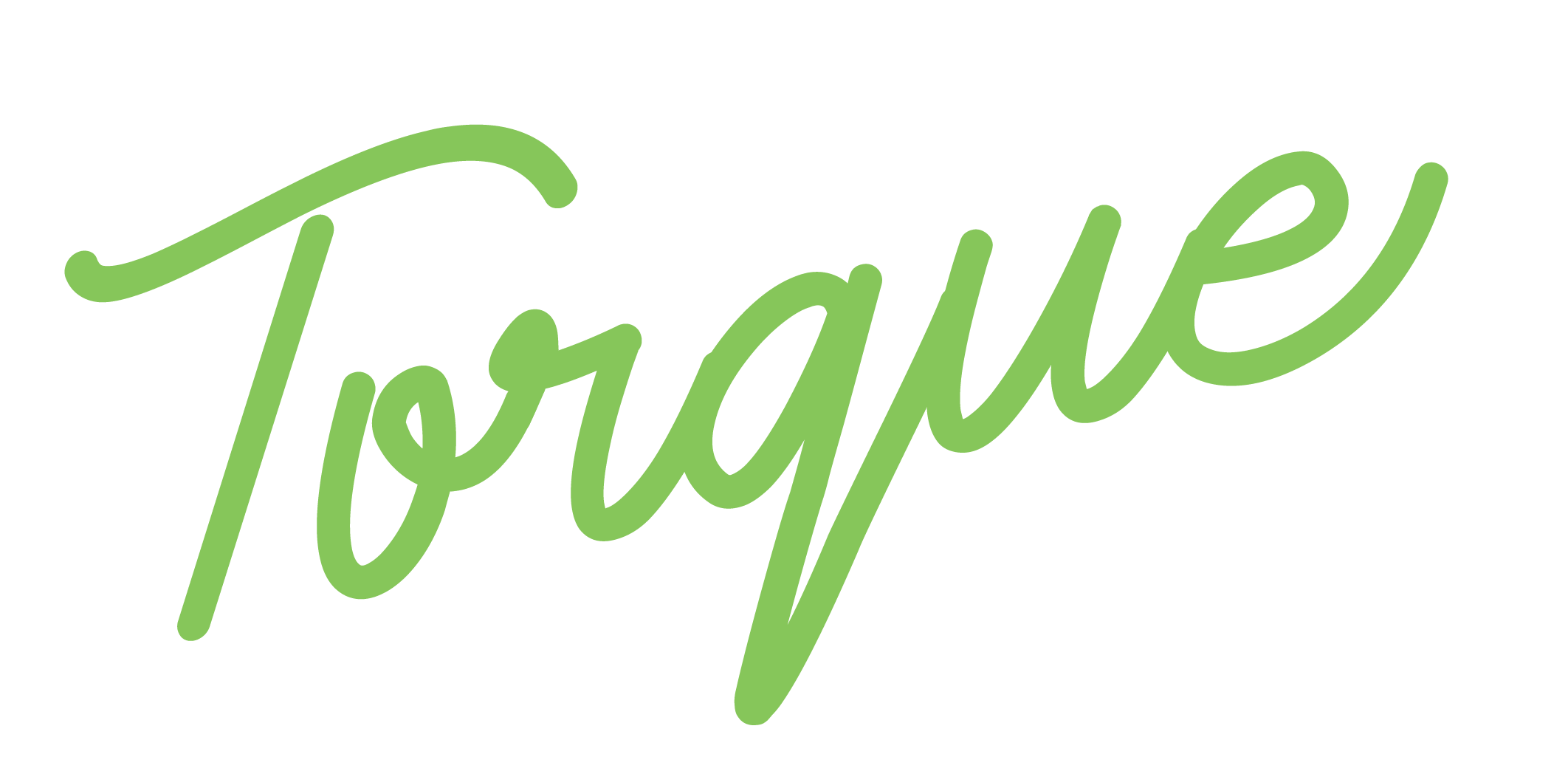
EXperience Matters
Mar 1
/
Hannelie Pretorius

Amidst the hustle and bustle of today's ever-changing business scene, creating a fantastic Employee Experience (EX) isn't just a passing fancy - it's the ultimate power move for any forward-thinking company! In a world where talent is the ultimate currency, companies are realising that employees are the real MVPs (Most Valued Player). But creating a workplace that's more than just a Monday-to-Friday grind takes some serious flair and finesse.
It requires a full toolkit, a mindset upgrade, and a pledge to ongoing evolution and reinvention.
Building your EX toolbox
When a flower doesn’t bloom, you fix the environment it grows in, not the flower. You adjust whatever is needed to nurture a healthy and happy plant. EX is not merely about offering competitive salaries or trendy workspaces; it’s about cultivating a space where employees can bloom to their full potential, feel appreciated, and can stand tall. Here's what you need in your EX toolkit.
Appreciative inquiry and growth mindset
Embrace a mindset of positivity and continuous improvement. Appreciative inquiry focuses on strengths and possibilities rather than problems, while a growth mindset encourages learning and development at every level. In 2020, the world received a crash course in the reality that change is the only constant, especially in the workplace. The abrupt transition to remote work blurred the lines between office and home, triggering career twists and turns for many.
Now, leaders must discard the old-school "change management" playbook and adopt something more innovative. Dr. Nadya Zhexembayeva advocates for a reinvention mindset, which essentially involves flipping our perspective on change.
In the workplace, change happens all the time, just like the weather. Today, we use hot desks; tomorrow, it might be collaborative pods. We need to be ready to adjust. Think of our innovation style as mixing old-fashioned values with new ideas, like adding a modern twist to grandma's recipe. In the future, it's not just about making plans; it's about imagining a world where virtual reality team building, and AI-powered brainstorming are everyday things.
Being open to change is more like surfing the waves in style, not just going with the flow. Embracing change boosts our adaptability and fuels a culture of innovation, where we're all eager to grab our surfboards and ride the waves again and again. Let's flip tradition on its head and embrace the winds of change, because in this journey, our willingness to evolve and grow is what keeps us moving forward.
Empathy and active listening
A workplace where listening and empathy are in everyday practice is an integral part of your culture. Have you considered a team meeting, where instead of the usual monologue, it's a dialogue where everyone's voice matters?
Think about Sarah, our dedicated project manager, who's juggling deadlines and client demands. She's been dropping hints about needing more support, but they've gone unnoticed. Truly hearing her concerns and offering a helping hand, not only ease her workload but also strengthens your team bond.
Then there's Mark, the tech whiz, who's been quietly struggling with new software updates. He's voiced his frustrations, but they seem to have fallen on deaf ears. Taking the time to understand his challenges and providing tailored training, will boost his confidence but also enhance your team's digital capabilities.
In the workplace, empathy isn't a luxury; it's essential for success. By actively listening and responding with care, we create a culture where every voice matters, and everyone feels valued.
Monthly or quarterly reviews, and performance appraisal sessions typically get bad press, but these can be turned into golden opportunities in a company’s listening strategy. Create capacity within your management team for using these situations more strategically and help everyone involved understand how they are contributing towards creating a better workplace culture that serves everyone.
Encouraging open conversations gives our team the confidence to speak up without fear. As leaders, we understand the pressure of time, but we've all been in situations where even small comforts, like having a fan on hot days, made a big difference. Sometimes, it just takes one brave soul to ask the boss for that fan while others hesitate. Witnessing that person return unscathed can inspire a ripple effect of courage and openness throughout the team.
Acknowledging the importance of psychological safety in our workplace is like recognising the foundation of a sturdy bridge that allows smooth passage for all who walk across it. It's about creating an environment where every team member feels comfortable to express themselves, take risks, and engage in meaningful dialogue without the fear of being ostracised or belittled. Just as a well-built bridge inspires confidence in those who cross it, psychological safety instils trust and camaraderie among team members. It enables your people to navigate challenges and achieve your collective aspirations with resilience and unity.
Unpacking the EX strategy
An EX strategy serves as a roadmap, guiding organisations from point A to point B in enhancing employee satisfaction, engagement, and overall well-being. Here's a breakdown of key elements to consider.
In "The Forgotten Social Side of Strategy" by Jeroen Kraaijenbrink, a Strategy and Leadership Consultant, it's highlighted that participative strategy development yields superior strategies and facilitates smoother execution. This underscores the compelling rationale to shift from a top-down approach to a participative one in strategising. However, from an HR standpoint, the advantages of embracing participative approaches extend even further. Three notable benefits, each contributing to organisational success and employee engagement.
Strategy content: motivation and excitement as driving force
In developing an effective EX strategy, it's imperative to consider more than just economic or organisational benefits. Strategies must resonate with individuals, addressing their needs, motivations, and expectations. A strategy that excites and motivates employees is almost unstoppable, even if imperfect from a business perspective.
Strategy process: creating ownership and contribution
The process of developing a strategy is as crucial as its content. Involving employees empowers them to contribute and create a sense of ownership. This social aspect of strategising enhances adoption and smooths execution, ensuring alignment with organisational objectives.
Strategy context: the effect on mindset, positions, and relationships
Strategies imply change, often significant and far-reaching. They impact not only systems and processes but also people—shifting mindsets, power dynamics, and interpersonal relationships. Understanding and managing these effects are essential for successful implementation and sustained effectiveness.
Linking with purpose
Clear objectives
Engage everyone
Use resources wisely
Continuous feedback loop
Sometimes, amidst the hustle, it's easy to overlook the tried and tested methods in favour of quick fixes like handing out cupcakes. But as Jeroen Kraaijenbrink rightly points out, there's value in revisiting these old favourites.
Listening in depth
Listening in depth
Create a listening strategy that goes beyond the surface. Look into feedback channels to truly understand what employees are saying. Dive into data to spot patterns, uncover potential issues, and find areas ripe for improvement. Think outside the box to capture nuanced insights into employee needs and feelings.
Linking with purpose
Your EX strategy should be in sync with broader corporate goals. Identify where your EX strategy intersects with company objectives, ensuring that every effort moves the organisation forward as a whole. For example, your EVP should tie in with your rewards and employees should be reminded of the goals and rewards you are working towards.
Clear objectives
Define your EX strategy's objectives clearly. Whether it's boosting engagement, enhancing productivity, or nurturing a supportive culture, make sure everyone knows what they're working towards.
Engage everyone
The success of your EX strategy hinges on involvement from all corners of the organisation. Build a diverse team that represents different departments and levels, ensuring that every voice is heard and accounted for.
Use resources wisely
Allocate your resources strategically to bring your EX strategy to life. From funding to people to technology, make sure you have what you need to turn plans into action.
Continuous feedback loop
Set up reliable feedback systems to keep tabs on how well your EX initiatives are working. Define key metrics and indicators to measure progress and tweak your approach as needed.
Elements of EX strategy
Your EX-strategy is like a recipe. Each part is an essential ingredient, working together to make sure everything turns out just right. It's like baking a cake – you need all the ingredients to make something delicious that everyone can enjoy.
Cultivating a Positive and Inclusive Organisational Culture
Encourage a workplace environment that cherishes diversity, equity, and a sense of belonging among employees. For instance, organise regular cultural awareness training sessions where employees share their traditions and customs. Additionally, establish employee resource groups that focus on specific demographics or interests, fostering a sense of community and understanding.
Recognition and rewards
Implement tangible recognition programmes to honour and celebrate employee achievements. For example, introduce a peer-to-peer recognition platform where employees can nominate their colleagues for outstanding contributions. Additionally, organise quarterly awards ceremonies to publicly acknowledge and reward exceptional performance.
Effective communication channels
Establish transparent communication channels to ensure employees are well-informed and engaged. For instance, create an internal communication platform, like a tailor-made application, where leadership shares regular updates and invites feedback from all levels of the organisation. Conduct monthly town hall meetings where employees can ask questions and voice concerns directly to senior management.
Mapping the employee journey
Map out the entire employee journey, from entry to exit, to identify areas for improvement and enhancement. For example, conduct surveys at key touchpoints to gather feedback on the recruitment process, onboarding experience, and professional development opportunities. Use this data to refine processes and tailor experiences to meet employee needs.
Prioritising employee wellness
Demonstrate a commitment to employee well-being and mental health by offering comprehensive wellness programmes and support services. For instance, provide access to counselling services, mindfulness workshops, and flexible work arrangements to help employees achieve a healthy work-life balance. Encourage regular breaks and promote physical activity by offering gym memberships or organising group fitness classes.
Reviewing HR policies and procedures
Regularly review and refine HR policies and procedures to ensure fairness, equity, and consistency across the organisation. For example, conduct a thorough audit of existing policies to identify any potential biases or areas for improvement. Engage employees in the review process to gather diverse perspectives and ensure policies reflect the needs of all employees.
Embedding Diversity, Equity, and Inclusion (DEI) principles
Integrate DEI principles into every aspect of the employee experience, from recruitment and onboarding to professional development opportunities. For example, implement blind recruitment processes to mitigate unconscious bias and ensure a diverse pool of candidates. Offer regular diversity training sessions to promote awareness and understanding among employees.
Creating a conducive physical workspace
Design a physical workspace that enhances productivity, collaboration, and creativity. For instance, create flexible workspaces that cater to different work styles and preferences. Incorporate natural elements such as plants and natural light to promote well-being and reduce stress. Provide designated areas for collaboration and quiet reflection to accommodate diverse work needs.
Leveraging enabling technology
Harness advanced technologies like AI, AR, and VR to streamline processes and empower employees to excel in their roles. For example, implement AI-driven recruitment tools to identify top talent more efficiently and effectively. Offer virtual reality training simulations to provide immersive learning experiences and enhance skill development. Additionally, utilise chatbots to provide instant support and assistance to employees for routine HR inquiries.
Shifting perspectives
To excel in EX, it's essential to challenge conventional wisdom and broaden our understanding of what contributes to a positive employee experience. Here are some common misconceptions to overcome:
- Tangible vs. intangible aspects: While tangible factors like salary and workspace are important, intangible aspects such as respect, recognition, and a sense of belonging are equally crucial. Don't overlook the intangible elements that profoundly impact employee satisfaction and engagement.
- Continuous feedback vs. exit interviews: Waiting until an employee exits to gather feedback is a missed opportunity. Adopt a proactive listening strategy and encourage continuous feedback to address issues promptly and enhance the overall experience for all employees.
- Beyond the workplace environment: Employee experience extends beyond the physical workspace. Personal development opportunities, work-life balance initiatives, and meaningful recognition programmes are essential components of a holistic EX strategy.
Leveraging data and metrics
Data isn't just a bunch of numbers; it's the cool kid at the party, the smooth operator that knows all the secrets. When it comes to understanding and boosting the employee experience, data is like having a superpower. It's the Sherlock Holmes of the workplace, uncovering clues and cracking the code to what makes your team tick.
Persona mapping
The cherry on the cake would be persona mapping which can significantly streamline the implementation of the strategies outlined for enhancing the employee experience. By creating detailed personas that represent different segments of the workforce, organisations can tailor their initiatives to meet the specific needs and preferences of each group. Here's how persona mapping can make the process easy as pie.
Tailoring your approach
Speaking their language
Always getting better
Seeing the results
Metrics and KPIs
Measure the impact of your community-building initiatives on employee satisfaction, productivity, and retention. Utilise metrics such as eNPS, engagement, turnover, and more to track progress and identify areas for improvement.
Understanding what drives your team
Through persona mapping, your HR teams can get a real handle on what makes your diverse workforce tick. By diving into the nitty-gritty details of demographics, job roles, and what motivates people, you can get a clearer picture of what matters most to each team member.
Tailoring your approach
With insights from persona mapping, you can create initiatives that really speak to different groups within your organisation. For instance, you might find that younger team members are hungry for opportunities to grow and learn, while older colleagues crave balance and flexibility. By customising things like training programmes, wellness perks, and how you communicate, you can make sure everyone feels valued and engaged.
Speaking their language
Persona mapping lets you fine-tune your communication strategies to hit the mark with all employee groups. Whether it's choosing the right channels, using the right tone, or sharing content that resonates, you can connect with everyone in a way that feels natural. So, while the younger crowd might love a Slack message, older colleagues might prefer a good old-fashioned face-to-face chat.
Always getting better
Persona mapping isn't a one-and-done deal. It's a tool that lets you keep your finger on the pulse of your team. By regularly checking in, tweaking your personas based on what's happening in the real world, and listening to feedback, you can keep your initiatives fresh and effective. As things change, from team dynamics to new tech trends, persona mapping helps you stay ahead of the game.
Seeing the results
When you tie your initiatives back to specific personas and goals, you can see what's really making a difference. By tracking metrics like how engaged your team is, how many people stick around, and how well everyone's performing, you can pinpoint what's working and what needs a tweak. It's all about making sure your efforts have a real impact on the people who matter most—your team.
Metrics and KPIs
The way not to do it is by merely following your gut feeling. Running a successful business requires a thorough analysis on the work, sales, and financial results. And it can’t be done without tracking relevant business metrics.
Measure the impact of your community-building initiatives on employee satisfaction, productivity, and retention. Utilise metrics such as eNPS, engagement, turnover, and more to track progress and identify areas for improvement.
Shifting the business paradigm
To truly make EX a strategic differentiator, businesses must undergo a fundamental shift in mindset and approach:
Reinventing the Why
Move beyond lip service and make EX a central focus of your organisation's mission and values. Align your business objectives with the well-being and satisfaction of your employees.
Functional excellence
Ensure that your EX-initiatives add tangible value to employees' daily lives. Focus on practical elements that enhance their experience and drive meaningful outcomes for both individuals and the organisation as a whole.
Ultimately, an employee is still a customer. Recognising employees as customers underscores the importance of prioritising their satisfaction, engagement, and well-being within the workplace environment.
Just as businesses strive to understand and meet the needs of their external customers, they must also focus on understanding and addressing the needs of their internal customers—employees. By adopting a customer-centric approach to employee experience, organisations can cultivate a culture of care, trust, and mutual respect, which fosters loyalty, productivity, and innovation among employees.
In conclusion, unlocking the full potential of employee experience requires a holistic approach, a commitment to continuous improvement, and a genuine investment in the well-being and satisfaction of your workforce. By embracing a mindset of positivity, leveraging data-driven insights, and prioritising employee-centric strategies, businesses can cultivate a thriving culture where employees feel valued, empowered, and inspired to contribute their best work.


